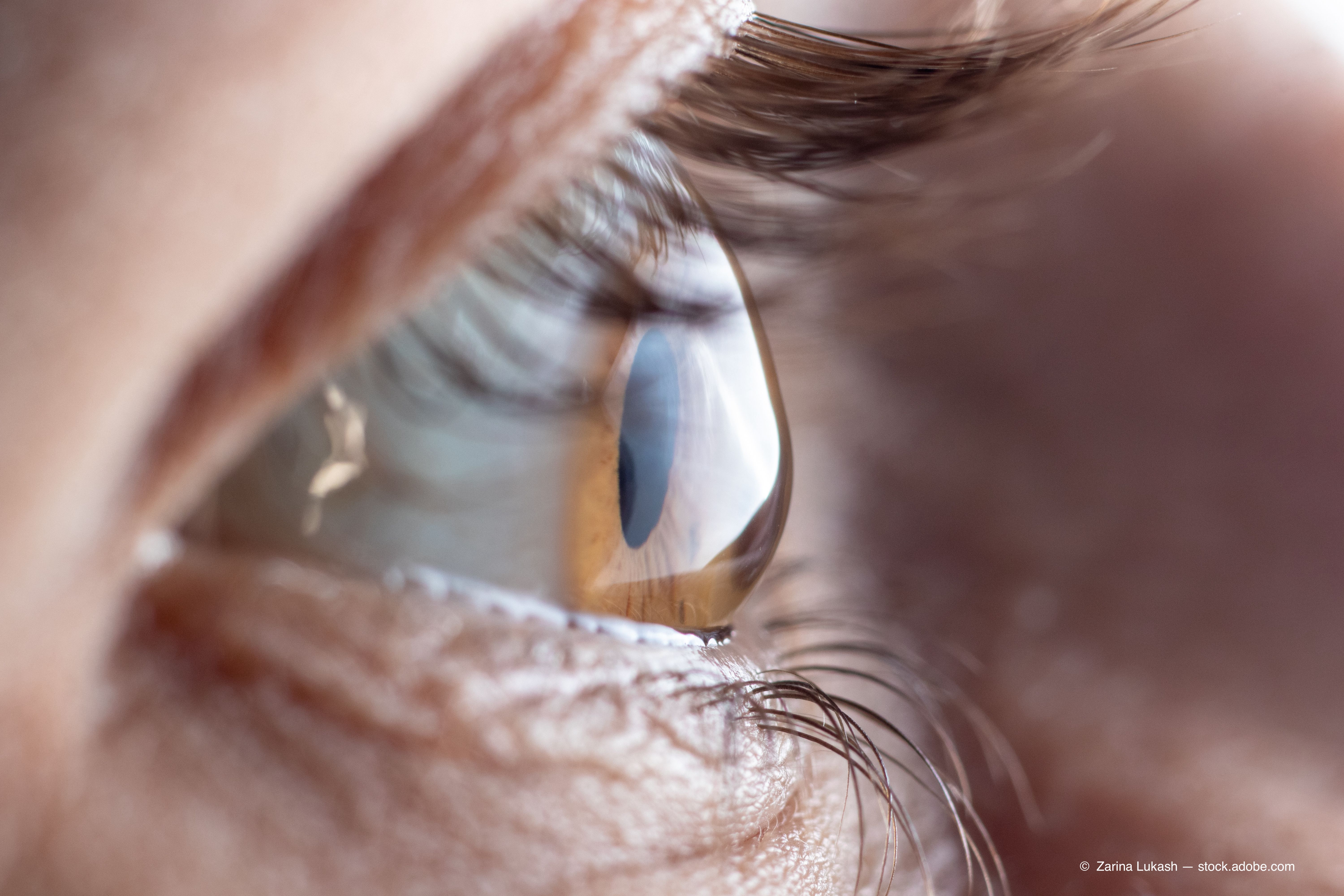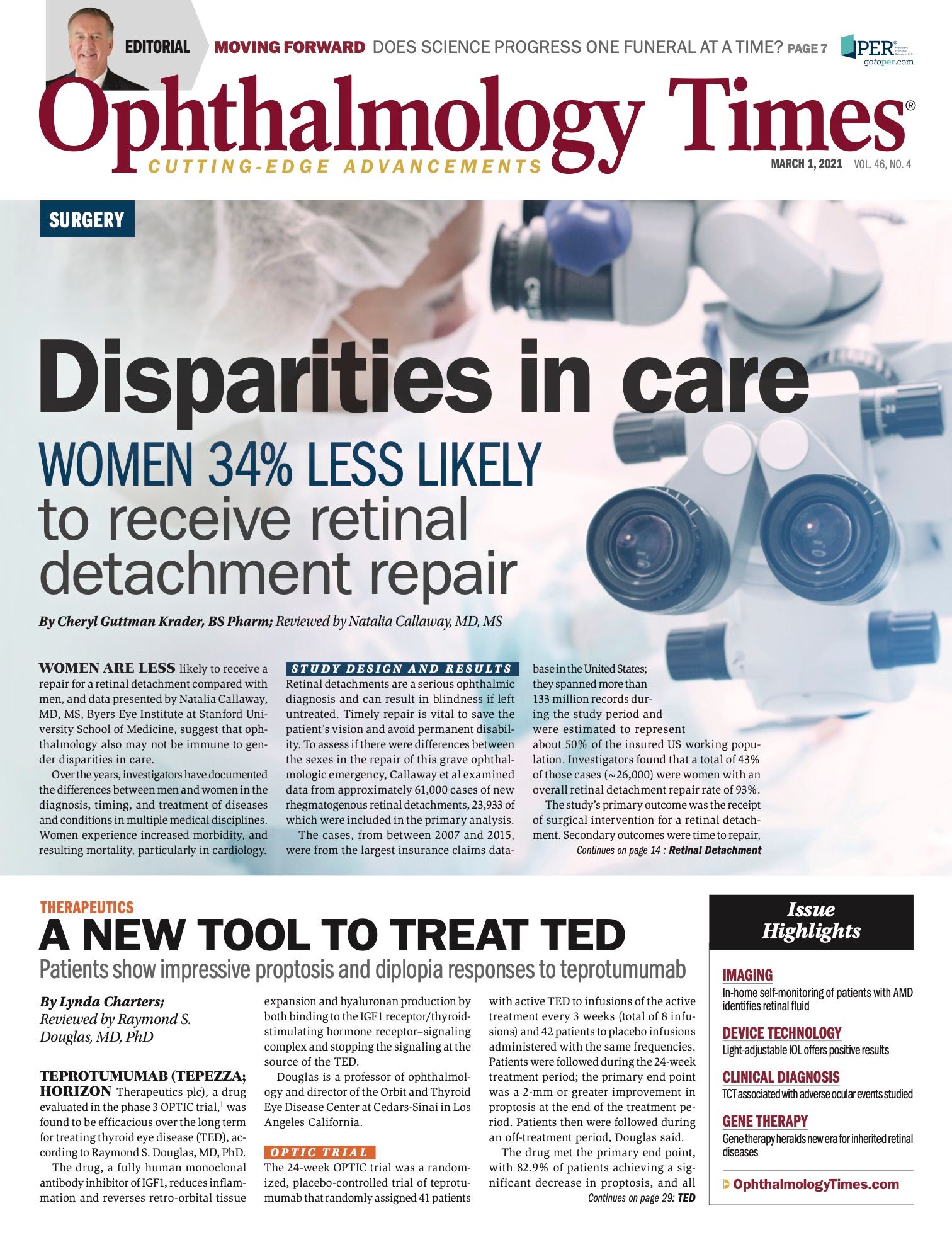Publication
Article
Digital Edition
Corneal transplantation experiences a revolution
Author(s):
Ophthalmologists refine procedures, offer better outcomes for patients.

This article was reviewed by Stephen E. Orlin, MD
A revolution is afoot in corneal surgery. New, evolving procedures have bumped penetrating keratoplasty as the gold standard despite its high success rates.
This is happening because the advent of layer-specific corneal surgeries has resulted in a paradigm shift in how corneal transplantation is undertaken, with the introduction of Descemet stripping automated endothelial keratoplasty (DSAEK), Descemet membrane endothelial keratoplasty (DMEK), and deep anterior lamellar keratoplasty (DALK), according to Stephen E. Orlin, MD, associate professor at the Scheie Eye Institute, University of Pennsylvania School of Medicine, Philadelphia.
DSAEK and DMEK
Posterior lamellar surgery has been around for decades but did not gain traction until the late 1990s, when Gerrit Melles, MD, described his sutureless posterior lamellar surgical procedure.
He followed up a short time later with DSAEK, which facilitated preparation of donor tissue, as well as faster visual rehabilitation and better visual outcomes with more predictable refractive results.
The donor tissue is usually prepared in the eye bank by using a microkeratome to remove a superficial cap of the donor stroma.
In the operating room, the donor tissue is marked to identify the stromal side and Descemet membrane is removed from the recipient cornea. The donor button is then inserted into the anterior chamber through a 5-mm limbal incision.
Related: More than meets the eye with corneal dystrophies`
The tissue is unfolded in the correct orientation and tamponaded against the back surface of the recipient cornea with an air bubble, which is replaced by balanced saline solution after about 1 hour, Orlin described.
Melles and colleagues took this procedure a step further with DMEK, a technique in which the diseased endothelium is replaced with an 8- to 10-μm layer of Descemet’s membrane alone with healthy endothelium.
Descemet’s membrane is stripped off the donor tissue, and circular disc measuring 7.5 to 8.5 mm is created with a keratoplasty punch. Descemet’s membrane is stained with trypan blue dye; Descemet’s membrane is stripped from the recipient as in DSAEK and the stained scroll is injected by cartridge or tube into the anterior chamber through a 2.5-mm limbal incision.
The anterior chamber is shallowed, and the donor tissue is unfolded in the correct orientation and tamponaded with an air bubble or, preferably, with sulfur hexafluoride (SF6) gas, he recounted.
A side-by-side comparison shows that DSAEK requires expensive equipment, and the thickness of the stromal tissue is unpredictable.
Related: SARS-CoV-2 genomic RNA in corneal transplantation: Are corneal transplantations safe?
DMEK requires only highly experienced eye bank technicians; however, it is more challenging to prepare.
“DMEK has evolved into a finely tuned operation, using prestripped, prestained, and preloaded tissue, making the surgeon’s job much easier,” Orlin said. In DMEK, donor age is not relevant to graft survival and outcomes, but older tissue is easier to handle and unfold during DMEK surgery.
DMEK also provides slightly better vision than DSAEK, in that 41% to 50% of patients achieve 20/20 best spectacle-corrected visual acuity (BSCVA), 67% to 85% achieve 20/25 BSCVA, and 94% achieve 20/40 BSCVA compared with respective percentages of 13%, 31%, and 85% with DSAEK.
In addition, DMEK is refractive neutral compared with a 1- to 3-diopter hyperopic shift with DSAEK. DMEK provides quicker visual recovery compared with that in DSAEK, which is slower but improves with time, according to Orlin.
Related: DMEK in 'super' seniors: feasible treatment, realistic expectations
“The surgical indications are the same for both surgeries, with the exception that DSAEK is more accommodating for eyes that have undergone previous procedures, such as glaucoma filtration, tube shunts, iridectomies, and anterior intraocular lenses,” he commented.
The procedures differ in their technical challenges. With DSAEK, Descemet’s membrane is stripped inside the diameter of the graft; in DMEK it is done outside the membrane graft.
The graft orientation in DSAEK is easier and tamponade is done only with an air bubble. Unfolding of the tissue is challenging in DMEK and is complicated by the natural scrolling of the tissue with the endothelium outside the scroll.
Postoperative complications are associated with both procedures. Pupillary block is possible with both but more likely with SF6 gas, which lasts longer.
Related: Teaching AI algorithms to identify corneal pathology: The future is now
Because of this, Orlin noted, he does an inferior peripheral iridotomy in all cases. In DSAEK, graft dislocations usually present on day 1 postoperatively and rebubbling is easy; in DMEK, the grafts can dislocate anywhere from days 1 to 5, and rebubbling can be more challenging if extensive but not necessary if the dislocation is peripheral.
DALK
In patients with healthy endothelium, such as may be present in keratoconus, stromal dystrophies, and stromal scarring from trauma and infections, DALK is possible.
In this procedure, the cornea is partially trephined and air forcibly injected into the stroma to cause detachment of Descemet’s membrane from the stroma.
The superficial stroma is debulked and the big bubble is entered with a blade; the remaining stromal fibrils are then separated from the healthy Descemet’s membrane and the residual tissue is excised, thus exposing the bare Descemet’s membrane. The donor tissue with Descemet’s membrane removed is sutured into the recipient bed.
“The major advantage is that the recipient endothelium is preserved and there is no immune rejection of the corneal endothelium,” Orlin said. “In addition, steroids can be discontinued sooner, the procedure is extraocular, and there is minor loss of endothelial cells.”
Related: Are posterior corneal curvature changes culprit in hyperopic shifts?
However, the disadvantages include the inherent difficulty of the procedure in obtaining the big bubble, development of interface haze, separation or incomplete detachment of Descemet’s membrane, and a false anterior chamber. There is also the potential for the underlying stromal disease to recur.
Corneal transplantation: the next generation
Now the question is: Is transplantation necessary? The answer: maybe not. Orlin cited a report by Kolby et al in which a 67-year-old man with Fuchs’ dystrophy who underwent a 4-mm central descemetorhexis without endothelial keratoplasty (DWEK) or Descemet stripping only (DSO).
The preoperative VA was 20/50, improved to 20/25 1 month postoperatively, and by month 15 was 20/20. At the final vision the central endothelial cell count was 969 cells/mm2.
“The theory is that the adjacent endothelial cells slide over and cover the denuded area and begin to clear the central edema,” he said.
Related: Harnessing 1-2 punch of KAMPs for corneal infection, inflammation
Rho kinase inhibitors, adjunctive therapy for DWEK/DSO, have been reported to enhance cell adhesion, migration, and proliferation. Ripasudil (Glanatec, Kowa Corp.) was approved in Japan for treating glaucoma.
Finally, a minimally invasive approach is being evaluated for advanced disease that involves injection of cultured cells for bullous keratopathy into the anterior chamber with adjunctive rho kinase inhibitor therapy.1
Following the procedure, the patient assumes a face-down position to facilitate settling of the cells on the posterior cornea.
DSAEK, DMEK, and DALK have created a paradigm shift in transplantation, and the minimally invasive procedures, such as DWEK, DSO, and adjunctive therapy with Rho kinase inhibitors, show promise.
The future for the next generation appears to be cell migration, cell cultures, genetics, and gene therapy, Orlin concluded.
--
Stephen E. Orlin, MD
e:stephen.orlin@uphs.upenn.edu
Orlin has no financial interest in this subject matter.
--
Reference
1. Kinoshita S, Koizumi N, Ueno M, et al. Injection of cultured cells with a ROCK inhibitor for bullous keratopathy. N Engl J Med. 2018;378(11):995-1003. doi:10.1056/NEJMoa1712770

Newsletter
Don’t miss out—get Ophthalmology Times updates on the latest clinical advancements and expert interviews, straight to your inbox.





